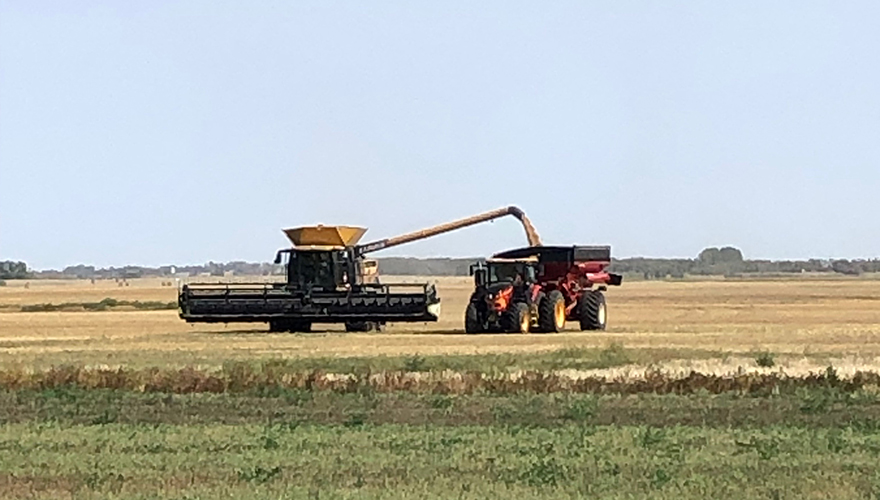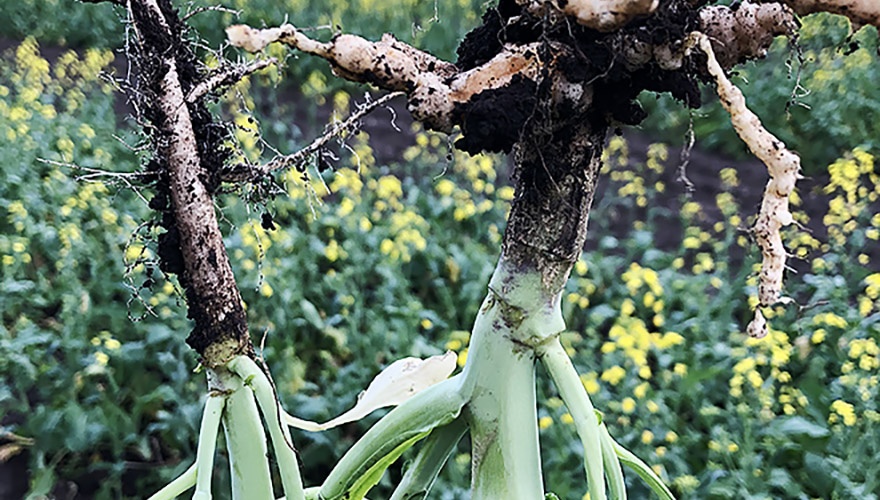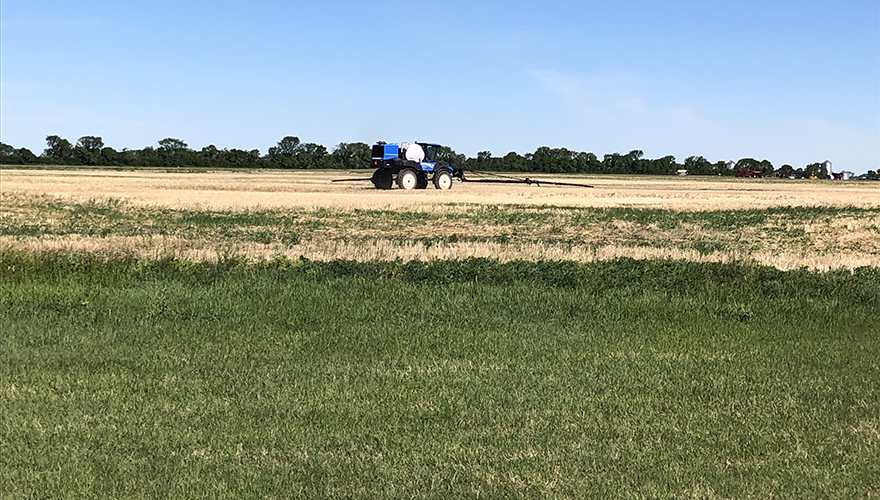Posted June 20, 2018
SCLEROTINIA STEM ROT
The key to a good disease management strategy is prevention. With certain diseases, such as sclerotinia stem rot, once disease symptoms are present in the field, it’s too late to act and save your yields. It’s important to understand why these diseases pose a threat and what can be done to help mitigate future occurrences.
Sclerotinia stem rot
Sclerotinia stem rot is one of the most serious diseases affecting canola across the western provinces. While it primary affects canola crops, it can also have a damaging effect on pulse crops such as lentils. The disease is a type of white mould that overwinters in the soil. The fungus, which is known in scientific terms as sclerotia, can live in the soil for up to four years.
SYMPTOMS IN THE FIELD
Wet weather and moist soil shortly before flowering causes the fungus to germinate. The first signs include the emergence of very small, golf tee shaped, mushrooms known as apothecia, according to Scott Anderson, Manager of Agronomic Services in Northwest Saskatchewan.
“Apothecia release spores into the air, which will land on the plant or on the petals. As the petals drop from the canola and begin to break down, that’s what the spores will use as a food source to continue to grow and ultimately infect the plant.”
Once the plant is infected, the stems begin to rot from the inside. It’s then unable to transport water and nutrients up the stem and the plant dies.
Anderson says some of the signs to watch for include areas of the field where plants have ripened prematurely and died.
“An earlier infection of sclerotinia is worse because you won’t get much seed set,” says Anderson. “With a later infection you may still get some seed fill, although in many instances the seed size will be reduced.”
MANAGING THE ISSUE
The biggest opportunity for controlling sclerotinia is crop rotation. Anderson says that rotating an infected field away from a host crop, like canola and lentils, for a few years will help get through the fungus’ germination cycle without damaging plants.
“With canola, there’s also some varieties that have some level of tolerance in them” says Anderson. “Selecting a hybrid with resistance to sclerotinia can help reduce infection. Beyond that, it’s time to consider applying a foliar fungicide.”
Anderson warns that turning to fungicide can only be a preventative measure and the timing for application is generally between 20 to 50% bloom. Once symptoms are confirmed in the field it’s too late to correct the issue.
“These fungicides are protective,” he explains. “You have to get them on so they can create a barrier to inhibit the spore germination and infection.
“If you’ve got a lush, heavy canopy that holds a lot of humidity that’s going to be higher risk,” Anderson explains. “When the conditions pose a higher risk, it’s important to keep scouting. There can also be different types of mushrooms in the field when conditions are wet. It’s easy to mistake other mushroom varieties for apothecia so it’s important to consult your agronomist.”
Read more in these other disease spotlights:
FEATURED LINKS
NEWSLETTER
Want to stay caught up in all things agriculture? Sign up for the newsletter and get all the latest news straight to your inbox.
Desease Spotlight Fusarium Head Blight
Posted June 04, 2018





